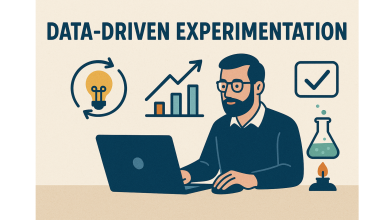
In an era where nearly 328.77 million terabytes of data are created daily, organizations often find themselves drowning in information but starving for insight. For global businesses and underserved communities alike, the inability to process this data efficiently can mean missed opportunities, poor service, and stagnant growth. Who helps bridge this critical gap?
For Shivali Naik, the answer was clear: technology should work for people—not the other way around.
With a deep foundation in advanced computing and an unwavering commitment to community transformation, Shivali has quietly become a force in global AI innovation. Her work, often operating behind the scenes, has transformed the way businesses make decisions, how underserved populations access technology, and how we all interact with machines in our daily lives.
“Innovation isn’t about the next big thing,” she says. “It’s about meaningful change—solving real problems, in real communities.”
A Global Problem, A Local Impact
The problem Shivali tackled wasn’t glamorous—it was systemic. Legacy systems, data overload, and fragmented workflows cripple industries from healthcare to retail. According to a 2023 McKinsey & Company report, businesses that integrated advanced AI and data analytics reported a 20–25% increase in operational efficiency. But the report also noted a glaring gap: smaller players and low-income communities were often left behind. This duality she says is what shaped her mission—to build scalable, intelligent solutions that worked just as well in rural schools and nonprofits as they did in billion-dollar corporations.
From Complex Systems to Tangible Solutions
One of her most impactful achievements came through the development of an AI-powered data processing system for a global enterprise burdened by outdated infrastructure. By re-architecting how data was extracted, interpreted, and acted upon, Shivali’s solution cut data retrieval times by 60% and drastically improved real-time decision accuracy.
But it wasn’t the speed that made the project meaningful—it was the people it served and could serve in the future. The core technology could be later adapted for a regional health network struggling to match patient records to care plans. That pivot could save the network weeks in manual work, freeing up doctors and nurses to spend more time with patients.
“Technology isn’t powerful until it reaches the people who need it most,” Shivali emphasizes.
AI with a Human Touch
In another instance, she led the deployment of an AI chatbot using natural language processing (NLP) for a multinational service company. The goal wasn’t to dazzle, but to cut customer service wait times, particularly in regions where digital literacy was low. Within three months, the solution reduced response times by 50% and—more importantly—became an intuitive tool for customers unfamiliar with traditional support channels.
A logistics worker in the Philippines, who had never interacted with AI before, would see the chatbot as “a helper that never gets tired.” For Shivali, a comment like that would mean more than any metric.
Bridging the Digital Divide
Beyond corporate boardrooms and tech panels, Shivali’s vision extends to those often forgotten by innovation. Through digital literacy initiatives she’s helped her technology reach over 5,000 individuals from populations in underserved areas. Her vision in terms of industry direction and explaining it as an actionable strategy has not only catapulted her organization forward but has also helped foster world technological development.
Leadership Beyond the Algorithm
Shivali’s strengths aren’t limited to algorithms and APIs. In fast-paced corporate environments, she’s earned recognition for her ability to translate complex technical goals into business realities. Her collaborative leadership style has been credited with shortening project timelines by up to 30%, thanks to streamlined adoption and better stakeholder communication.
She has also become a frequent voice in industry panels and policy discussions. From keynote addresses at global AI forums to whitepapers on responsible deployment, her influence has shaped conversations on ethical AI, especially as it relates to bias, data privacy, and sustainability. In 2024, the World Economic Forum listed responsible AI deployment as a top global priority—and her insights are now part of internal policy playbooks across several multinational firms.
Positioned at the Heart of a Technological Tipping Point
With the AI industry projected to reach $1.81 trillion by 2030 (Grand View Research), experts warn of a growing divide between those who shape these systems and those who simply adapt to them. Shivali Naik’s work sits right at that tipping point—engineering tools for speed and scale, but always grounded in access, ethics, and inclusion.
The Road Ahead: Purpose as the Compass
When asked what keeps her grounded despite her global influence, Shivali doesn’t hesitate.
“The future belongs to those who innovate with purpose and a commitment to positive change.”
Whether it’s an enterprise dashboard in a Fortune 500 company or a chatbot helping first-time internet users, her philosophy remains consistent: technology must create opportunity, not just efficiency. As more organizations seek to harness AI for social good, Shivali Naik offers not just a blueprint for innovation—but a reminder that impact begins with intent.



